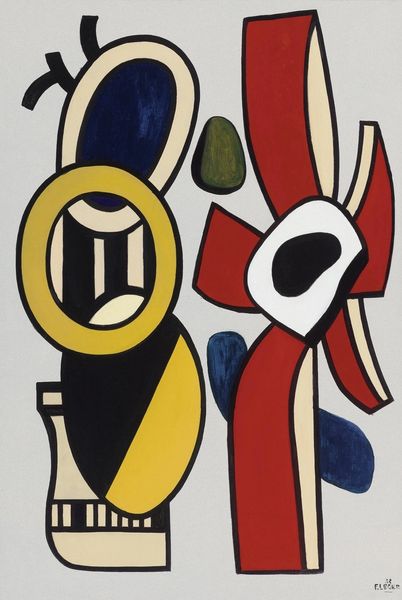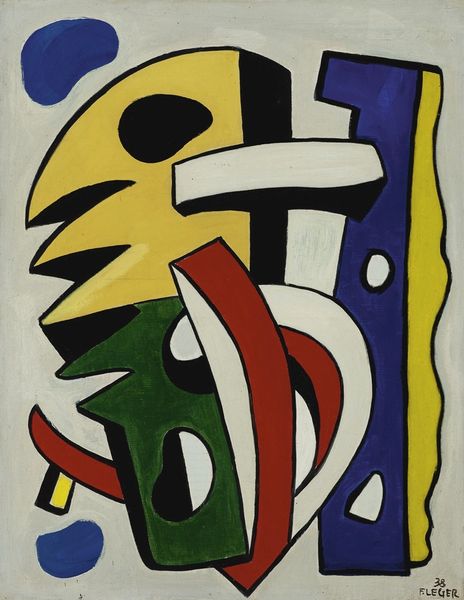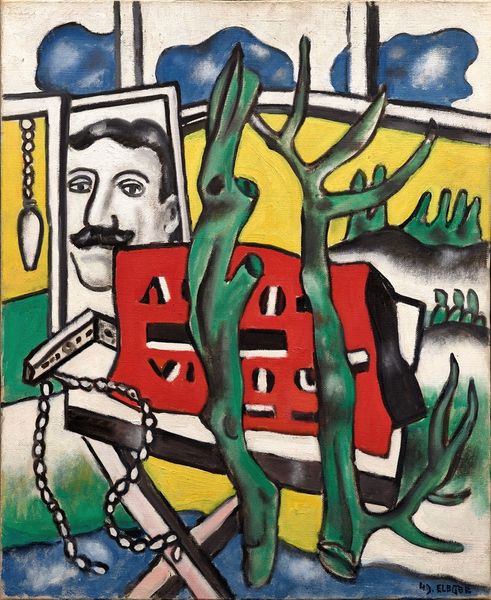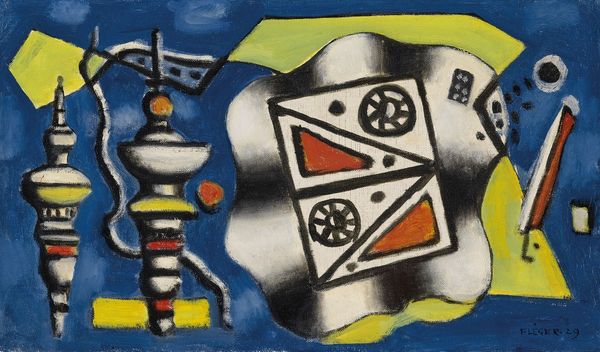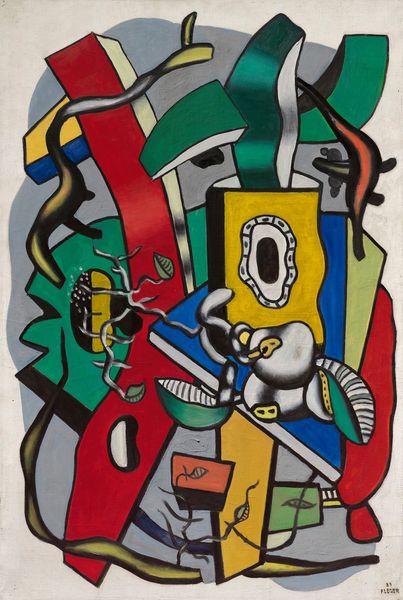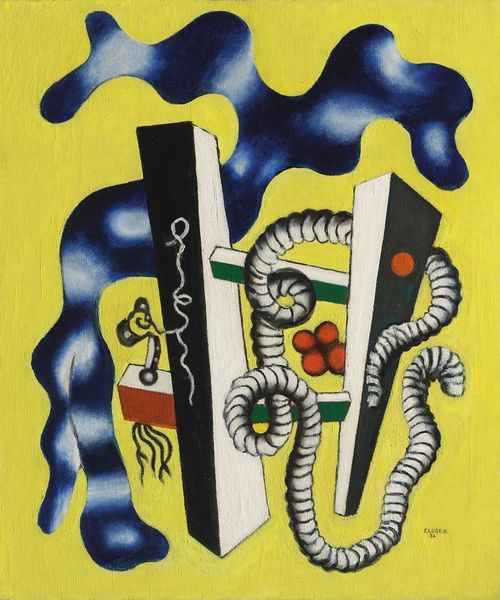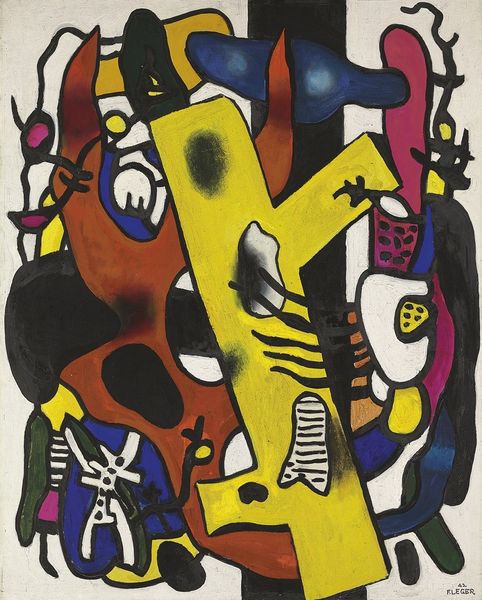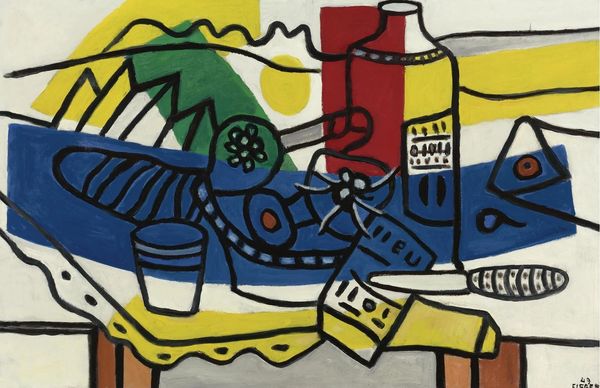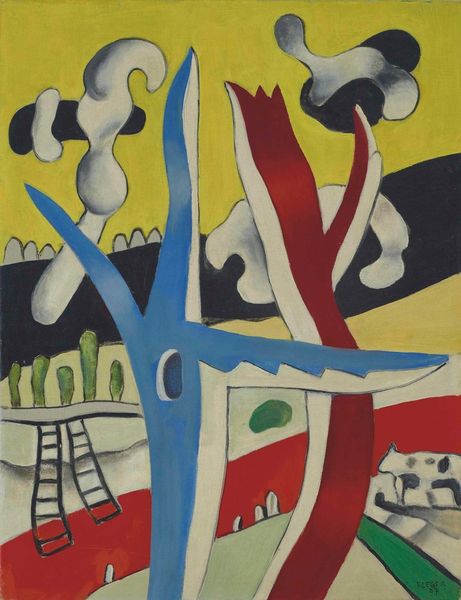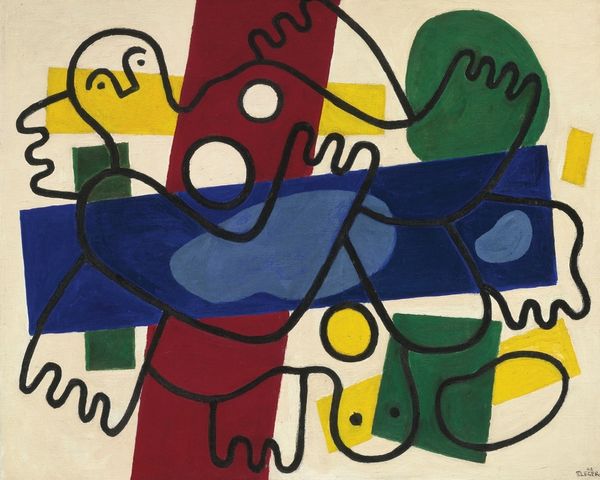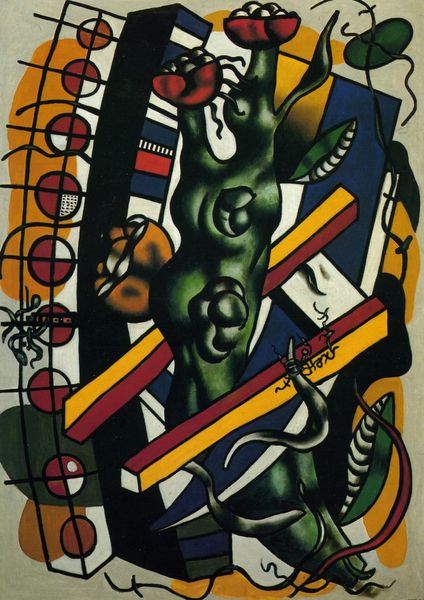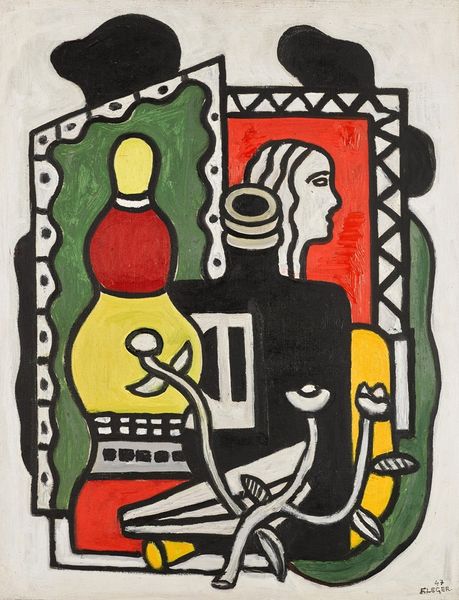
mixed-media, painting, oil-paint
#
cubism
#
neo-plasticism
#
mixed-media
#
painting
#
oil-paint
#
caricature
#
pop art
#
abstract
#
geometric
#
cityscape
#
modernism
Copyright: Modern Artists: Artvee
Curator: Fernand Léger painted “Le Signal dans le paysage” in 1955. The oil-on-canvas composition presents a starkly geometric arrangement. What are your first thoughts? Editor: It hits me as both playful and severe, doesn’t it? All these bold shapes – reds, yellows, that vivid blue background… Yet there’s this rigid structure underlying it, like some kind of diagram or a machine trying to blossom into a flower. Curator: Exactly. Léger, even after his purely abstract phase, constantly negotiated between abstraction and figuration, incorporating everyday objects, industrial motifs and the human figure, creating these "machine aesthetics." The signal—that central structure of stacked geometric forms—does resemble a futuristic building, doesn’t it? Juxtaposed, quite bizarrely, against those biomorphic forms beneath that seem almost volcanic in origin. Editor: He clearly thought about how we make our things. I mean, notice that heavy outlining – almost like painted metalwork. And the surface texture – not glossed over, you can really sense the materiality of the oil paint. You're totally right—it reads as an exaltation of industrial production. This feels more connected to labor than most people want to admit! Curator: And the use of color! Flat, unmodulated swathes of primary hues... It reminds me of those early advertisements, cheap, effective, drawing your eye with starkness. It has something unsettlingly 'Pop' about it, years before that term even existed. It seems prescient. Editor: The whole idea of “landscape” seems totally subverted too. I think that it shows the ways nature is commodified for leisure and visual spectacle, like the signal in the background. We can reflect upon the painting’s material makeup and begin to comprehend this work. Curator: A crucial point! The "signal" isn't simply placed within a landscape; it dominates, alters, reshapes our perception of it. The real impact lies, perhaps, in that subtle tension—between the hand-crafted, the materially evident, and the impersonal nature of mechanized, industrial forms. It is hard to imagine that Lèger didn't intentionally want to show us that strange push and pull. Editor: In the end, I'm going to call it visionary. Curator: Indeed. Its directness challenges our complacency and shows a bit of wit in Léger's distinct style.
Comments
No comments
Be the first to comment and join the conversation on the ultimate creative platform.
